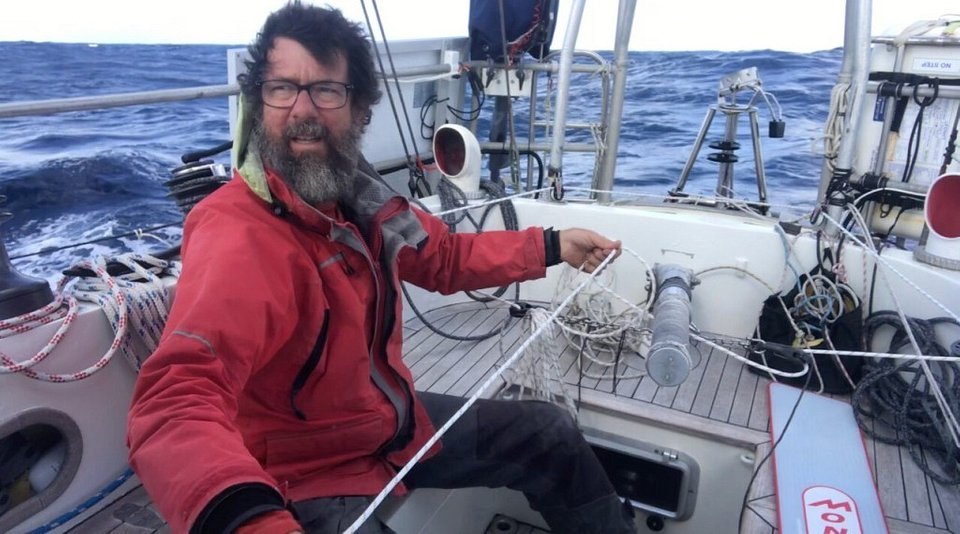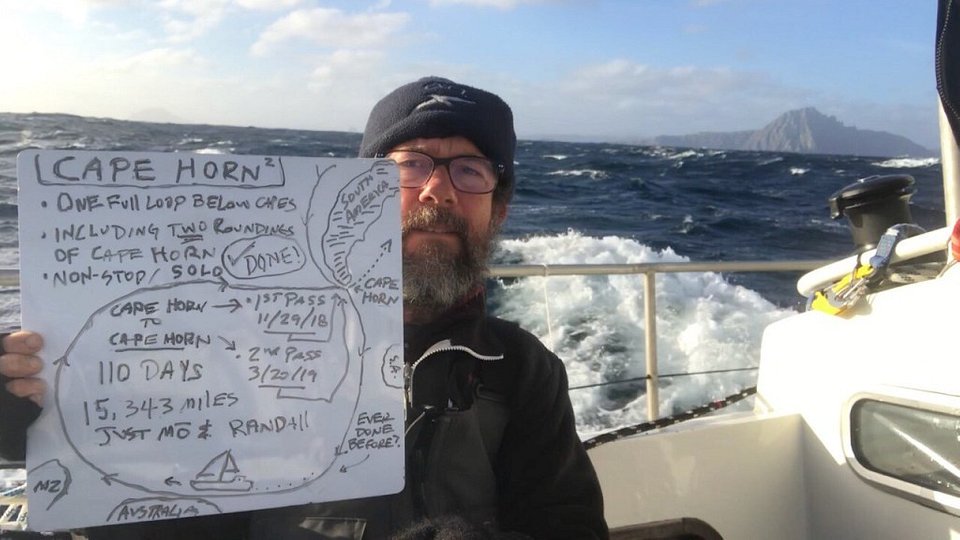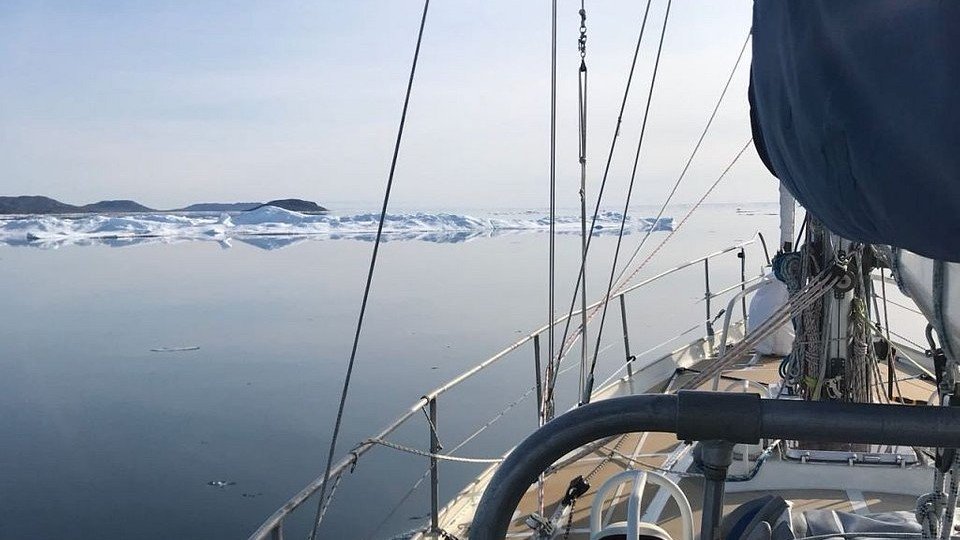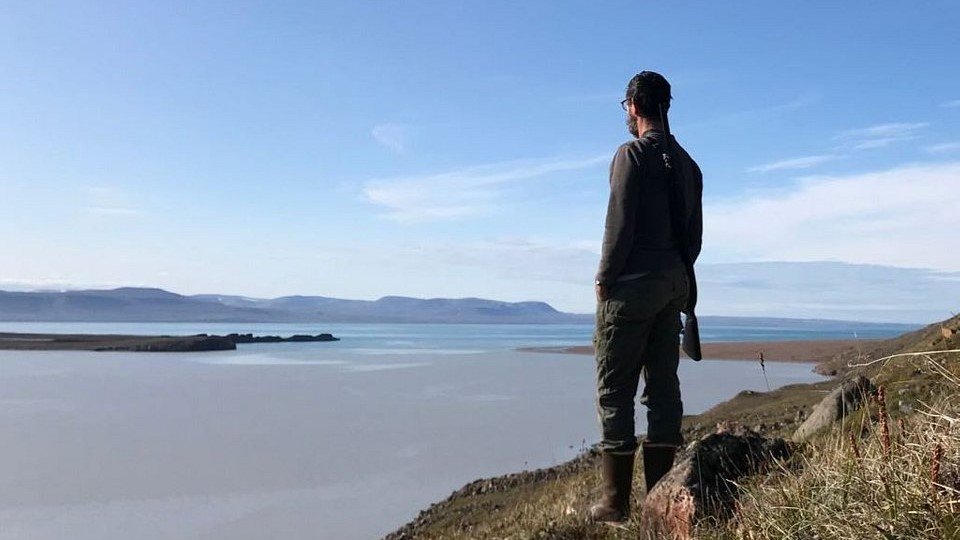Sailor Completes Solo Circumnavigation of Americas & Antarctica

November 25, 2019
In 2017, Randall Reeves was 8 months into his first sailing attempt of the “Figure 8 Voyage” — a circumnavigation of the Americas and Antarctica in one season — when he hit a severe storm in the Indian Ocean. Waves were breaking 200’ to 300’ in each direction, and his boat got knocked down so intensely his mast was fully submerged, breaking a window in the pilot house and flooding his electronics. The only communication tool that survived was his inReach® satellite communicator.
For the next 6 weeks as he limped to port, he relied on the inReach for weather and navigation data and two-way communication with friends and family back home.
“Literally, I lived on it,” Reeves said.
However, even that ordeal didn’t taint Reeves’ passion for being at sea.

His love for
sailing started in childhood. At a young age, he grew to revere his father’s
merchant Navy captain uniforms, charts and books. In high school, his family
bought a sailboat.
“I just knew
that was the thing I wanted to do,” Reeves said.
He was more
interested in ocean cruising than day sailing or racing but didn’t fully know
what was possible until college when he interviewed Bernard Moitessier. The
French sailor participated in the first sailing race around the world and for
many years held the record for the longest nonstop solo sail.
“After that,
I wanted to do a super, super long sail — an ultramarathon of the sea,” Reeves
said.
Reeves went on to complete epic adventures, including crewing the Arctic’s Northwest Passage and completing solo voyages from Alaska to Hawaii and back to California. Then came the idea to complete the Figure 8, a voyage that includes some of the most historic and difficult sailing routes around the Southern Ocean and Cape Horn and through the Northwest Passage above Canada and Alaska. Until Reeves’ successful voyage, sailors had done one or the other but never both in one go.
Why? He simply wanted to.

“I always
thought that was really obvious,” he said, laughing. “If you had the opportunity
to sail around the world nonstop for a year through some of the hardest oceans
in the world, wouldn’t you do it? But I learned fairly quickly that, no, most
people wouldn’t.”
And so he set off from California down the Pacific, rounded Cape Horn, circled Antarctica, rounded Cape Horn again and headed up the Atlantic and over the top of North America on his way back to California.
For the majority of the year-long voyage, Reeves went without seeing land or another human. His only source of information and communication were the electronics he had on board, and the only company he had was the wildlife he saw at sea.
Those
electronics also came in handy as he navigated through two very different
challenges — the treacherous and stormy southern waters and the ice-packed
northern waters.
inReach at Sea
In the
Arctic Ocean, Reeves used inReach tracking to successfully navigate through the
ice by working with a point person back home who had access to real-time
satellite imagery.
“He could only help me if he knew precisely where I was,” Reeves said.

He also
helped out other vessels navigating through the Northwest Passage by
communicating weather data via his inReach device to them.
“Because of
the dependability of the Iridium® global satellite network, I was able to use
the inReach in the Arctic to stay in touch with a couple of other boats and
pass them weather and navigation information,” he said.
Reeves otherwise kept his vessel very simple, opting not to have a refrigerator, freezer or water-making device (he carried his water on board). He had a tiller instead of a complicated wheel arrangement and steered the boat with a very simple mechanical device — relying only on autopilot as a backup.
“I think
what I learned is that simplicity, while on a super-long passage when anything
that can break will break, is key,” he said. “The strength and simplicity of
the boat are paramount.”
Reeves completed
his voyage to much fanfare on Oct. 19, 2019, sailing under the Golden Gate
Bridge to port back in his home state of California. After years of planning
and one failed attempt, he is now a record-breaking sailor. But as he looks
ahead to his future on the water, he’s pretty certain he’ll keep the device
that was his first satellite tool.
“The acquisition cost of the inReach is very low,” he said. “Even if you’re a sailor without a whole lot of cash, the interface makes a ton of sense. And it’s durable. It just doesn’t fail.”

Learn more about Randall Reeves and the Figure 8 Voyage at figure8voyage.com.
NOTICE: To access the Iridium satellite network for live tracking and messaging, including SOS capabilities, an active satellite subscription is required. Some jurisdictions regulate or prohibit the use of satellite communications devices. It is the responsibility of the user to know and follow all applicable…
